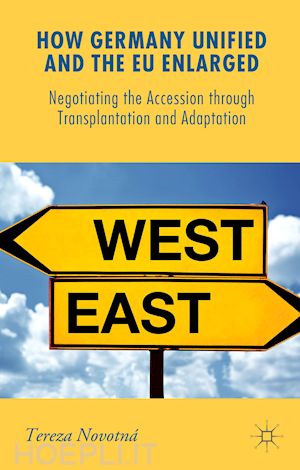
Questo prodotto usufruisce delle SPEDIZIONI GRATIS
selezionando l'opzione Corriere Veloce in fase di ordine.
Pagabile anche con Carta della cultura giovani e del merito, 18App Bonus Cultura e Carta del Docente
Based on original empirical research that includes 90 interviews with key leaders, this book compares and contrasts negotiations during the processes of German unification and Eastern enlargement of the EU, with particular attention to the Czech Republic. It develops two models of political integration and suggests that such integration can take place by means of a take-over (Transplantation), or by the joining entity adjusting to the norms and institutions of the accepting party (Adaptation). In addition to an exploration of these two different models and a detailed examination of the two cases, the book points to other historical examples of Transplantation and Adaptation and formulates lessons for where future research might travel, temporarily and geographically, in the cases of other political integrations. Providing new insights into German unification and European integration, this text is key reading for academics, advanced undergraduate and graduate students in EU Politics,as well as policy-makers and the wider public.
Tereza Novotná is an FNRS Post-Doctoral Researcher at Université Libre de Bruxelles, Belgium. She received her doctorate from Boston University and has held various visiting fellowships in the US, UK, Germany and Austria. She has widely published on various aspects of EU politics, especially EU foreign policy, transatlantic relations and the politics of Germany and Central and Eastern Europe.











Il sito utilizza cookie ed altri strumenti di tracciamento che raccolgono informazioni dal dispositivo dell’utente. Oltre ai cookie tecnici ed analitici aggregati, strettamente necessari per il funzionamento di questo sito web, previo consenso dell’utente possono essere installati cookie di profilazione e marketing e cookie dei social media. Cliccando su “Accetto tutti i cookie” saranno attivate tutte le categorie di cookie. Per accettare solo deterninate categorie di cookie, cliccare invece su “Impostazioni cookie”. Chiudendo il banner o continuando a navigare saranno installati solo cookie tecnici. Per maggiori dettagli, consultare la Cookie Policy.